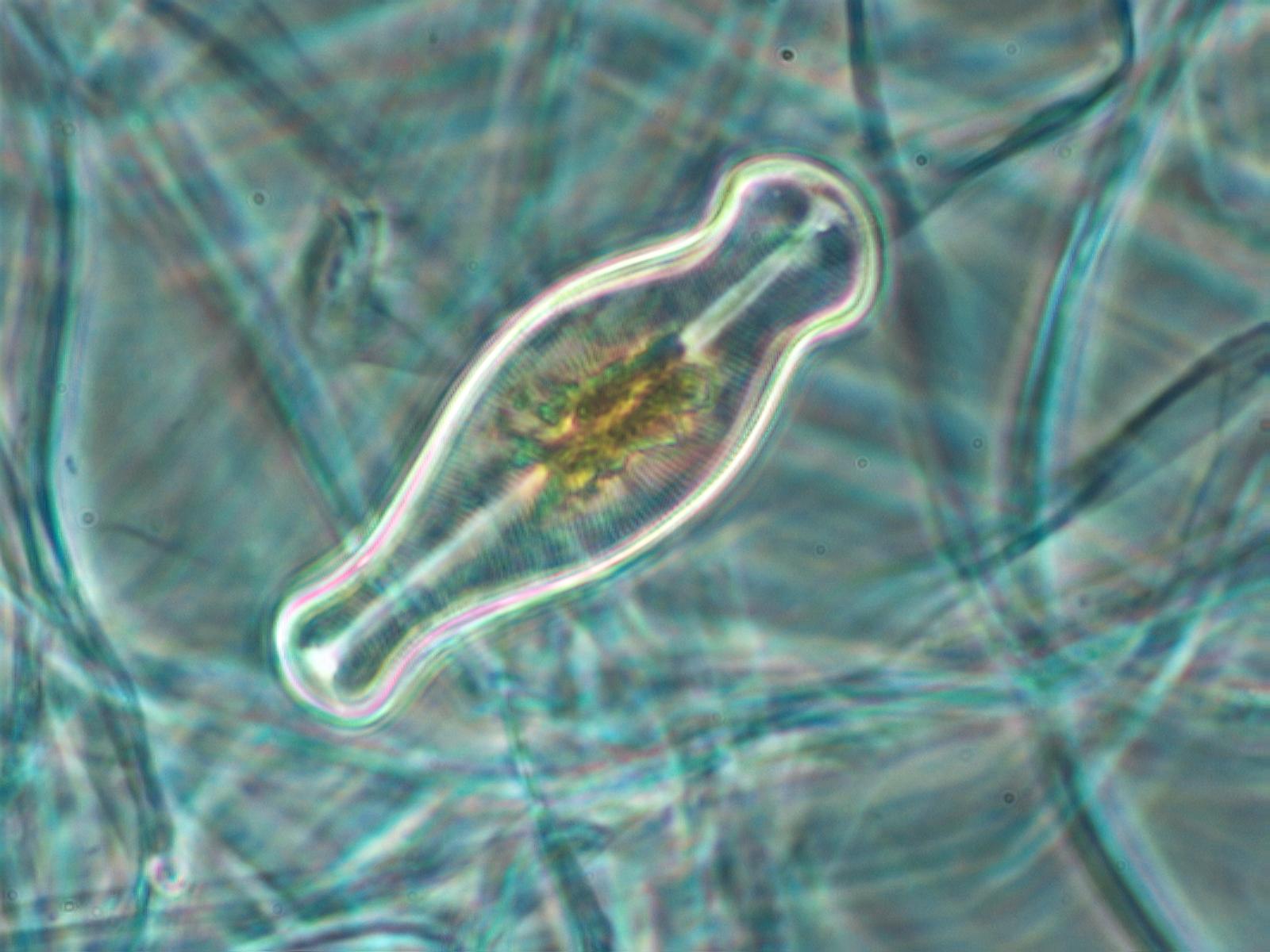Diatom, Gomphonema
This is from a mat of dead Cladophora algae removed from the Columbia River in northern Washington State. The Cladophora can be seen in the background.
Transmitted Phase Contrast Illumination
U.S. EPA, ALGAE AND WATER POLLUTION, EPA-600/9-77-036, p. 43, Plate II, 1977.
Vinyard, William C., DIATOMS OF NORTH AMERICA, Mad River Press, Inc., p.62, 1979. (ISBN 0-916-422-15-1)
Round, F.E., R. M. Crawford, D.G. Mann, THE DIATOMS:BIOLOGY & MORPHOLOGY OF THE GENERA, Cambridge University Press, pp. 148-9, 1990. (ISBN 978-0-521-71469-3)
Stoermer, Eugene F. and John P. Smol (eds), THE DIATOMS:APPLICATIONS FOR THE ENVIRONMENTAL AND EARTH SCIENCES, Cambridge University Press, 2001 (ISBN 0521004128)
Definition/Function:
Gomphonema is a form of algae that can produce a undesirable slime in water. It is also used as an indicator of industrial wastes and sewage in water (see ALGAE AND WATER POLLUTION by the US Environmental Protection Agency). A description of Gomphonema is given in THE FRESHWATER ALGAE by G. W. Prescott in the "HOW TO KNOW" series.Significance in the Environment:
Its presence in a fresh water stream or river can indicate industial or sewage pollution.Characteristic Features:
Gomphonema is transversely unsymmetrical. There is a bulb at each end with an enlarged midregion. The striae are relatively coarse.Associated Particles:
References:
Prescott, G. W., HOW TO KNOW THE FRESHWATER ALGAE, Wm. C. Brown Company, p. 308, 1970U.S. EPA, ALGAE AND WATER POLLUTION, EPA-600/9-77-036, p. 43, Plate II, 1977.
Vinyard, William C., DIATOMS OF NORTH AMERICA, Mad River Press, Inc., p.62, 1979. (ISBN 0-916-422-15-1)
Round, F.E., R. M. Crawford, D.G. Mann, THE DIATOMS:BIOLOGY & MORPHOLOGY OF THE GENERA, Cambridge University Press, pp. 148-9, 1990. (ISBN 978-0-521-71469-3)
Stoermer, Eugene F. and John P. Smol (eds), THE DIATOMS:APPLICATIONS FOR THE ENVIRONMENTAL AND EARTH SCIENCES, Cambridge University Press, 2001 (ISBN 0521004128)


